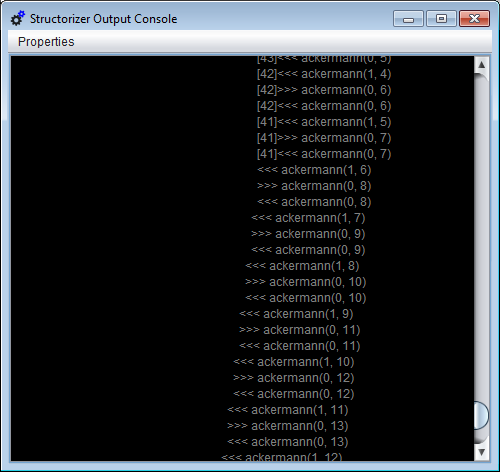

In fact, Structorizer provides an end-controlled loop with "repeat until" semantics. Is there a loop element with "do while" semantics as in C etc.?
STRUCTORIZER NOT OPENING MANUAL
Is there any user manual for Structorizer? Likewise, when you load diagrams Structorizer will adapt them to the current keyword set (if you allowed this refactoring in the import options for NSD files, reachable via menu item "Preferences"->"Import" it is enabled by default). to replace the previously valid keywords in the texts by the new ones). Whenever you modify the parser preferences, Structorizer will offer you automatically to refactor all open diagrams accordingly (i.e. Note that you may even choose among some pre-configured localized keyword sets via the broad button near the lower right corner of the Parser Preferences panel. One might expect that a typical FOR loop in C syntax looks like this: for (int i = 0 i "Parser" and change the keywords according to your needs. Though this syntax - once very unusual when C was designed - has become pretty popular since many C-inspired other languages have adopted it, the disadvantages caused by it concerning language-independence and predictability e.g.

Needless to say, we're free to implement our own scanners, JAX-RS annotated resources and even Google Guice binders.Why doesn't Structorizer support FOR loops in C-like syntax, i.e.
STRUCTORIZER NOT OPENING CODE
The code above scans the package for Spring-annotated beans and adds them as components to the container JVM. New SourceCodeComponentFinderStrategy(new File("/path/to/base"), 150)) įinally, we start the finder: componentFinder.findComponents() New ReferencedTypesSupportingTypesStrategy() We can even plug in custom resolution strategies: ComponentFinder componentFinder = new ComponentFinder( Resolution strategies affect things such as which components will be added to the model, depth of dependency tree traversal etc. Next, we need to create a ComponentFinder configured with one or more resolution strategies. To utilize this feature, we need to add yet another dependency: Componentsįor existing code-bases using the Spring framework, Structurizr provides an automated way of extracting Spring-annotated components and adding them to the architectural artifacts. Rendering the resulting diagram via PlantUML produces: 7. createContainerView(paymentTerminal, "F5", "Container View") Next, we define relationships between these newly created elements: f5.uses(jvm1, "route") įinally, create a container view that can be fed to a renderer: ContainerView view = workspace.getViews() "JVM-3", "JVM-3", "Java Virtual Machine") Ĭontainer oracle = paymentTerminal.addContainer( "JVM-2", "JVM-2", "Java Virtual Machine") Ĭontainer jvm3 = paymentTerminal.addContainer(

"JVM-1", "JVM-1", "Java Virtual Machine") Ĭontainer jvm2 = paymentTerminal.addContainer( "Payment Load Balancer", "Payment Load Balancer", "F5") Ĭontainer jvm1 = paymentTerminal.addContainer( In a C4 model, containers can be web applications, mobile apps, desktop applications, databases and file systems: pretty much anything that holds code and/or data.įirst, we create some containers for our payment terminal: Container f5 = paymentTerminal.addContainer(
STRUCTORIZER NOT OPENING SOFTWARE
Let's extend our software system by adding some containers.


 0 kommentar(er)
0 kommentar(er)
